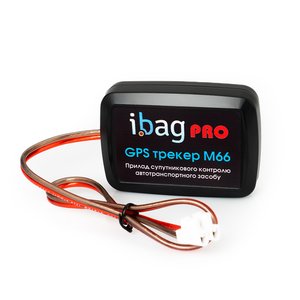
Protocol used by GPS tracking devices manufactured by Ibag headquartered in Ukraine.
flespi parses the Ibag protocol messages into a JSON object with the
fields listed below in the Parameters tab.
To connect your tracker using the Wonlex protocol, you need to have a ibag channel created first.
Point your tracker to the channel's domain name:port via SMS or configuration tool provided by the vendor.
Then create a device instance for your tracker and use a 15-character IMEI (usually specified on the tracker casing) in the ident field.
Use the Toolbox tab on the device screen to check if the messages are coming.
absolute.acceleration
number
g
Module of accelerometer vector
absolute.deceleration
number
g
Module of deceleration value from accelerometer
ain
number
volts
Voltage on the analog input
alarm.event
boolean
Alarm event triggered
battery.level
number
percentage
Internal battery level
battery.voltage
number
volts
Internal battery voltage
can.axle.weight
number
kg
Weight on the axle read from CAN
can.engine.coolant.temperature
number
celsius
Engine coolant temperature read from CAN
can.engine.temperature
number
celsius
Engine temperature read from CAN
can.fuel.volume
number
liters
CAN fuel volume
channel.id
number
ID of channel that received a message
custom
any
Any custom parameter
device.id
number
ID of device that received a message
device.name
string
Name of device that received a message
device.type.id
number
ID of device type of device that received a message
din
number
Digital inputs bitmask
dout
number
Digital outputs bitmask
driver.message
string
Driver text message content
engine.ignition.status
boolean
Engine ignition or ACC status
engine.motorhours
number
hours
Total calculated engine motorhours
engine.oil.pressure
number
Engine oil pressure
engine.rpm
number
rpm
Engine RPM read
external.powersource.voltage
number
volts
External power voltage
fuel.consumed
number
liters
Fuel volume totally consumed by vehicle
fuel.level
number
percentage
Fuel level percentage
fuel.volume
number
liters
Fuel volume
gsm.cellid
number
Mobile network (GSM, 3G, 4G, LTE, 5G, ...) base station ID
gsm.lac
number
Mobile network (GSM, 3G, 4G, LTE, 5G, ...) location area code
gsm.mcc
number
Mobile network (GSM, 3G, 4G, LTE, 5G, ...) country code
gsm.mnc
number
Mobile network (GSM, 3G, 4G, LTE, 5G, ...) code
gsm.network.roaming.status
boolean
Mobile network (GSM, 3G, 4G, LTE, 5G, ...) in roaming mode
gsm.signal.level
number
percentage
Mobile network (GSM, 3G, 4G, LTE, 5G, ...) signal strength level
ibutton.code
string
Hexadecimal code of connected iButton
ident
string
Device unique identifier like serial number, IMEI, etc
media
boolean
Message contain media file
media.image
object
Image file in media storage
peer
string
IP:port from which device connecting to the channel
position.altitude
number
meters
Altitude value for position
position.direction
number
degrees
Heading angle at position detection moment
position.hdop
number
Horizontal dilution of precision
position.latitude
number
degrees
Latitude coordinate value
position.longitude
number
degrees
Longitude coordinate value
position.satellites
number
Quantity of satellites used to calculate coordinates for given position information
position.speed
number
km/h
Instant speed at position detection moment
protocol.id
number
ID of protocol
protocol.version
string
Protocol version string
server.timestamp
number
seconds
Timestamp when server received a message
software.version
string
Software version string
tacho.position.speed
number
km/h
Instant speed reported by tacho
timestamp
number
seconds
Message timestamp
touch.memory.id
number
Touch Memory Key ID
vehicle.mileage
number
km
Total calculated mileage
x.acceleration
number
g
Accelerometer value X
y.acceleration
number
g
Accelerometer value Y
z.acceleration
number
g
Accelerometer value Z
Properties
Custom message command
Examples
custom
The command is used to send custom messages to the device. It allows to implement additional features necessary for the controller.
is added automatically
message: Text of the message
Text message
Examples
text_msg
Send text message to device
message: Text message content
Tags



